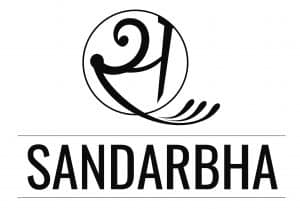Pata chitra or painting on cloth is among the most distinct forms of traditional painting in India.
- Considered as one of the earliest forms of indigenous paintings, its origin can be traced back to the 8th century A.D.
- Traditionally, Pata chitra craftsmen are called ‘Patidars’. They would go from village to village and enact their stories through songs and dance.
- The community in West Bengal is called Patuas. They are a group of wandering scroll painters painting popular mythological stories and taking forward the age old tradition from one village to another.
- There are two forms of Pata Chitras-
- 1. The vertically scrolled paintings are called ‘Jodano’ Pata.
- 2. The horizontally scrolled paintings are called ‘Gutano’ Pata.
- Initially Pata Chitras were painted on palm leaves, then they moved to home processed canvas made of cloth, gum and eggshells.
- Finally the paintings moved to hand made paper and now, of late, a combination of machine made paper and some cloth forms are used as canvas.
- The brushes are made from the whiskers of the tail of squirrels or mongoose.
- Pata chitras are not only aesthetically beautiful but are also eco-friendly.
- The outlines of the figures are made in black and red and are then painted with vegetable colors.
- These colors ensure that the paintings are bright and beautiful even when they are decades old.
- The themes of the paintings are both religious and also stories from everyday life.
- After the drawing is complete, the song or the ‘pater gaan’ is created to suit the visuals.
- The activity of narrating the story along with dance and song in front of an audience is referred to as ‘pat khelano’.
- Traditionally, the Pata Chitra used to be mostly demonstrated by male artists, who were accompanied by younger male members of the family. The women of the house used to mostly participate by organizing for the trips or later, by drawing and preparing the canvasses. However, with its growing popularity over the years, women started participating actively. Not only do they help in drawing the Pata Chitras, but, they also help with selling the items at stalls, markets, villages and cities.
- The Odisha Pata Chitra has received a major stimulus with the launch of a Geographical Indication Logo to brand the unique art form across the globe.
Hindi
- पाटा चित्र या कपड़े पर पेंटिंग भारत में पारंपरिक चित्रकला के सबसे अलग रूपों में से एक है।
- इन्हें देशी पेंटिंग्स के बेहद पुराने स्वरूपों में से एक माना जाता है। ईसा पूर्व 8 वीं शताब्दी के समय से इनका अस्तित्व खोजा जा सकता है।
- परंपरागत रूप से, पाटा चित्र कारीगरों को ‘पाटीदार’ कहा जाता है। वे गांव-गांव घूमते हैं और गीतों और नृत्य के माध्यम से अपनी कहानियों सुनाते हैं।
- इस समुदाय को पश्चिम बंगाल में पटुआ कहा जाता है। कह सकते हैं की यह घुमन्तु चित्रकारों का एक ऐसा समूह है जो कागज के रोल पर बने चित्रों को लेकर गांव-गांव भटकते हैं और उनके माध्यम से पौराणिक कहानियां सुनाने की सदियों पुरानी परम्परा को आगे बढ़ाते हैं।
- पाटा चित्र दो प्रकार के होते हैं-
1. खड़े पाटा चित्रों को ‘जोडणो’ पाटा कहा जाता है।
2. आड़े चित्रों के ‘गुटणो’ पाटा कहा जाता है।
- प्रारंभ में पाटा चित्र ताड़ के पत्तों पर बनाये जाते थे। बाद में कपडे, गोंद और अंडे के खोल से घरों पर तैयार कैनवास पर इन्हें बनाया जाने लगा।
- आगे चल कर इन्हें हस्तनिर्मित कागज पर बनाया जाने लगा और अब तो मशीन पर तैयार कागज और विशेष प्रकार के कपडे से तैयार कैनवास पर पाटा चित्र बनाये जाने लगे हैं।
- इनके ब्रश गिलहरी या नेवले की पूंछ के बालों से बनाये जाते हैं।
- पाटा चित्र न केवल सौंदर्य की दृष्टि से सुंदर हैं, बल्कि ये भी पर्यावरण के अनुकूल भी हैं।
- चित्रों की बाहरी रेखाएं काले और लाल रंग में बनाई जाती हैं। फिर इनमे वनस्पति रंग भरे जाते हैं।
- ये रंग यह सुनिश्चित करते हैं की दशकों बाद भी पेंटिंग्स की सुंदरता और चमक बानी रहे।
- इन पेंटिंग्स की थीम धार्मिक भी हो सकती है और प्रतिदिन के जीवन की कहानियां भी होती हैं।
- ड्राइंग पूरी होने के बाद चित्रों के अनुरूप गान तैयान किया जाता है।
- दर्शकों के सामने नृत्य और गीत के माध्यम से कहानी सुनाने को ‘पाट खेलणो’ के रूप में जाना जाता है। परंपरागत रूप से, पाटा चित्र का प्रदर्शन ज्यादातर पुरुष कलाकार परिवार के बालक सदस्यों के साथ करते थे। घर की महिलाऐं प्रायः यात्रा की तयारी करती थी, बाद में वे पेंटिंग बनाने और कैनवास तैयार करने में भूमिका निभाने लगीं। समय बीतने के साथ इनकी लोकप्रियता बढ़ी तो महिलाओं ने अन्य गतिविधियों में भी सक्रिय रूप से भाग लेना शुरू कर दिया। उन्होंने न केवल पाटा चित्र तैयार करने में मदद करना शुरू किया बल्कि उन्होंने गांवों-शहरों, बाजारों में स्टाल लगा कर वस्तुएं बेचने में सहयोग करना भी शुरू कर दिया।
- Geographical Indication Logo जारी होने के बाद उड़ीसा के पाटा चित्रों को एक brand के रूप में दुनिया भर में अनूठी पहचान मिली है।











